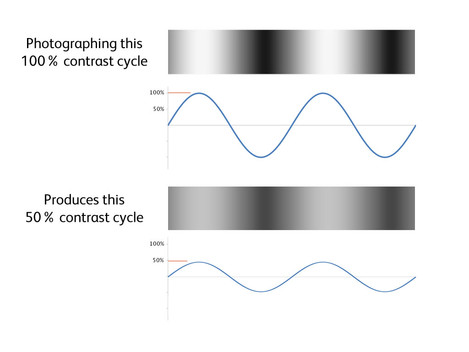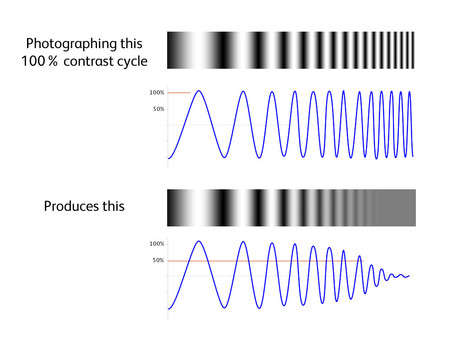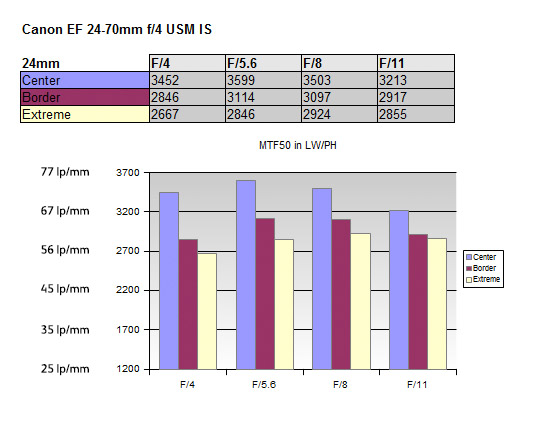MTF & How Resolution is Presented

Tim Parkin
Tim Parkin is a British landscape photographer, writer, and editor best known as the co-founder of On Landscape magazine, where he explores the art and practice of photographing the natural world. His work is thoughtful and carefully crafted, often focusing on subtle details and quiet moments in the landscape rather than dramatic vistas. Alongside his photography and writing, he co-founded the Natural Landscape Photography Awards, serves as a judge for other international competitions. Through all these projects, Parkin has become a respected and influential voice in contemporary landscape photography.
We recently recorded a livestreamed webinar about lenses and although we went overtime by a considerable amount, the interest was very strong. As such we thought it a good idea to go into a little bit more about the science behind lenses without scaring people too much. Hopefully we’ll split the content into ‘easily digested’ with a few separate ‘geeky asides’ for those of you, like me, who like to know what is really going on.
The first thing we’ll look at is just what those tests you see at places like DxO, Photozone and DPReview actually mean. Well first of all they all mean slightly different things but one thing they have in common is that they measure contrast.
The Role of Contrast in Resolution
You will probably have heard the term “MTF” or “Modulation Transfer Function” (could have been could "wibble transfer"). Essentially this just means how much contrast is lost when different levels of detail are photographed. Here is a diagram showing the reduction in contrast for a 50% MTF.
If we vary the frequency of the detail (make the detail finer and finer) we can see the contrast dropping.
For instance you will probably have heard a number referred to as MTF50. This means how much detail can be recorded, how fine the wibble, with only 50% contrast lost. The choice of 50% is fairly arbitrary however. It just ‘works ok’ as a common standard - we’ll come back to what other values could be used later.
50% contrast compared with what though? Well the typical way is to compare it with the maximum possible contrast transfer which would be contrast between the white and black if they were big enough to fill the camera screen. i.e. we assume that when we have just a black square next to a white square filling the camera view this contrast is transferred at 100%. It doesn’t mean that 100% is complete black and complete white lines, that depends on the contrast of the lines in your test chart.
How is Detail Described?
The level of detail is referred to in various ways.
| What fraction of a cycle (a cycle being white line and a black line - also known as a line pair) happens in a single pixel. Makes more sense as the inverse pixels per cycle - how many pixels you need for a black line and a white line. | |
| cycles per mm (cy/mm or cy/in) | Number of black and white line pairs in a mm or inch |
| line pairs per mm (lppmm) | Number of black and white line pairs in a mm |
| line widths per picture height (or LW/PH) | Number of lines across the whole of a certain cameras picture height |
| line pairs per picture height (or LP/PH) | Number of black and white line pairs in a certain cameras picture height |
I think the two most commonly used values are line pairs per mm when the lens is being tested on it’s own and Line Widths per Picture height when the camera and lens are being assessed together. The most important distinction is between numbers that count a white and a black line pair and numbers that measure each line whether it's black or white.
So Why MTF50?
Well in the days before Photoshop when prints were ‘smaller’, it was important that your detail had a suitable level of contrast. The establishment settled on 50% as a good transfer figure and a good indication of a lenses quality. However in more modern times we have the ability to sharpen images and add ‘clarity’ etc and hence lower levels of contrast are acceptable, especially at the finer resolutions near to the resolution of the sensor. We’ll come back to this later.
How Many Line Pairs per mm?
Well for digital cameras, people tend to be most interested in the resolution at the sensor pixel level - nobody wants to lose the resolution of their lovely digital camera. Let’s take a look at some sample resolution tests from Photozone.de - this one from the Canon 24-70 f/4 IS




